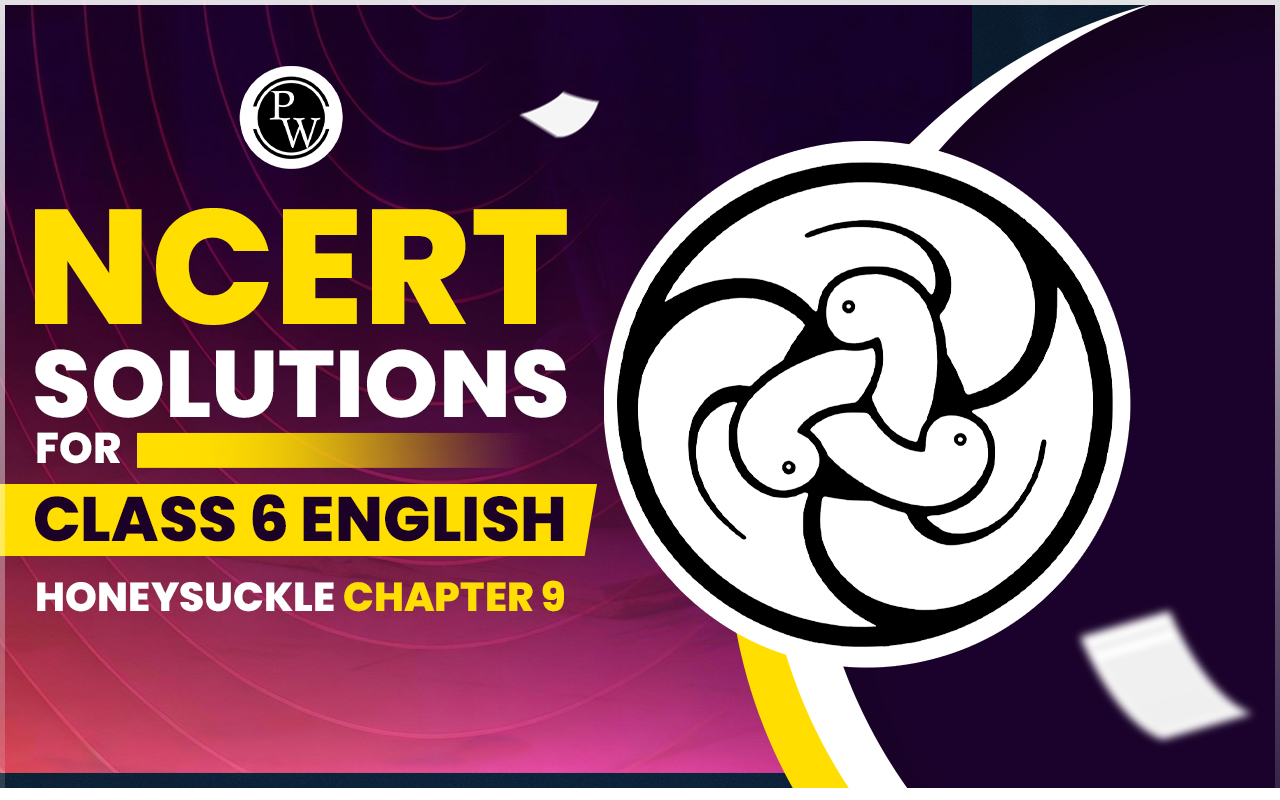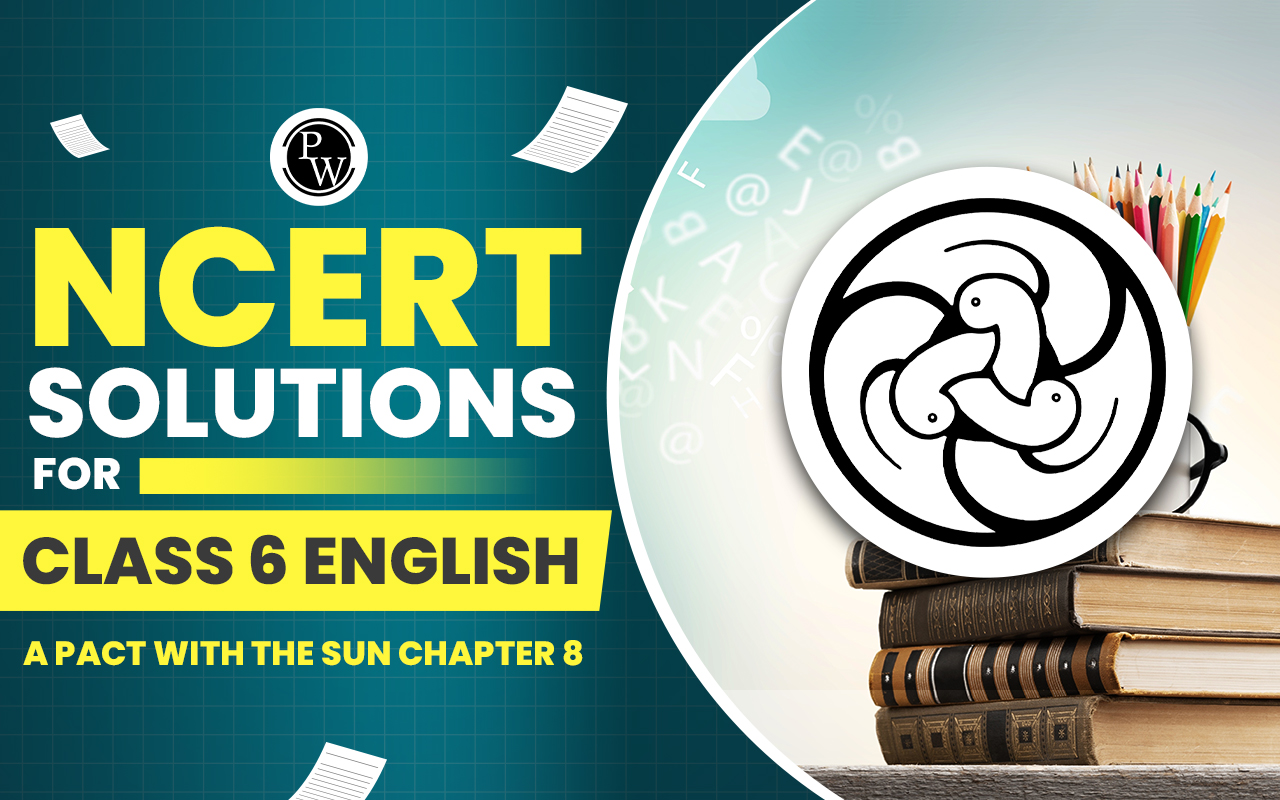

NCERT Solutions for Class 6 English Honeysuckle Chapter 9
NCERT Solutions for Class 6 English Honeysuckle Chapter 9: We all know that living creatures adapt to their environments. But have you ever wondered how animals survive and thrive in one of the harshest habitats on Earth - the desert? In this post, we will take a closer look at some of the amazing desert animals featured in the NCERT Honeysuckle textbook for class 6. Chapter 9 of the book introduces us to camels, jerboas, larks and more - and explains their incredible adaptations that allow them to beat the blistering heat. We will provide a full PDF download of the NCERT solutions for this chapter, along with a summary and explanation of some of the most important questions. By the end, we hope you are as fascinated as we are by the superpowers that enable desert wildlife to call the unforgiving sands their home.NCERT Solutions for Class 6 English Honeysuckle
NCERT Solutions for Class 6 English Honeysuckle Chapter 9 Overview
As the warm Indian sun beats down on the endless sands, a vast and vibrant desert ecosystem thrives beneath its rays. This dry landscape may seem barren at first glance, but among the sculpted dunes and rocky ravines lives a hardy cast of characters that have adapted ingeniously to survive in one of the harshest environments on Earth. From elusive sand cats to nomadic camels, each desert creature has found its own way to endure and even flourish in the furnace-like conditions. A proactive approach to exam preparation, initiated months in advance, can effectively address these issues. A crucial starting point for this preparation is the early acquisition of English NCERT Solutions from Physics Wallah.NCERT Solutions For Class 6 English Honeysuckle Chapter 5
NCERT Solutions for Class 6 English Honeysuckle Chapter 9 Desert Animals
1) Survival in the Desert:
- Desert animals employ unique methods to survive in harsh desert conditions. Gebrils find refuge in cool underground burrows during the hottest part of the day.
2) Adaptations of Darkling Beetles:
- Darkling beetles use their legs to catch drops of moisture in the desert. They lift their legs, allowing the water to trickle down into their mouths.
3) Camels as Desert Survivors:
- Camels, known as the 'ships of the desert,' can extract water from desert plants. Their humps store fat, enabling them to survive for extended periods without food and water.
4) Snakes in the Desert:
- Some snakes, like the rattler, inhabit rocky deserts. They strike with lightning speed when threatened. Snakes, such as pythons, can survive for a year or more without eating.
5) Mongooses' Cooperative Hunting:
- Mongooses hunt together in deserts, preying on beetles and other small creatures. They use a special alarm call to warn each other of potential threats, and they are skilled snake-killers.
6) The Lesson of Deceptive Games:
- The chapter conveys a lesson about being cautious in games of chance. The narrator, Rasheed, learns that he can be easily fooled, emphasizing the importance of discernment.
7) Taming and Use of Camels:
- Camels were tamed by humans long ago due to their ability to survive in deserts. They serve as valuable means of transportation, with the capacity to endure extended periods without water.
8) Role of Fat in Camel Humps:
- The humps of camels, whether dromedary (one hump) or Bactrian (two humps), are filled with fat. This fat serves as an energy reserve, allowing camels to survive without food and water.
NCERT Solutions for Class 6 English Honeysuckle Chapter 6
NCERT Solutions for Class 6 English Honeysuckle Chapter 9 Questions and Answers
Here are the questions and answers for NCERT Class 6 English Honeysuckle Chapter 9 - Desert Animals: 1) Why do deserts have a sparse population? Deserts are characterized by minimal water and vegetation, making them inhospitable for habitation. Only around oases or water springs, where greenery exists, are there small villages. The scarcity of water and greenery discourages people from settling in deserts. 2) What are some notable features mentioned about snakes in the lesson? The lesson mentions that there are over 2300 different kinds of snakes globally, varying in size and venomous nature. Not all snakes are poisonous, and while most snakes lay eggs, some give birth to their young. Rattlesnakes, found in the rocky deserts of America, are capable of reaching lengths up to 11 meters and feed on mice and rats. 3) Where are rattlesnakes commonly found? Rattlesnakes are prevalent in the American continent, particularly in the day and rocky deserts. They primarily feed on small prey such as mice and rats. 4) What information does the author provide about mongooses? Mongooses are depicted as amusing animals commonly seen in Africa. They form groups and hunt together, mainly preying on beetles and other small creatures. They have a distinctive alarm call to warn each other of potential threats. Mongooses are renowned for their ability to kill snakes but, ironically, are also preyed upon by hawks, eagles, and large snakes. 5) What insights are gained from the lesson about camels? Camels, adapted to desert life, are capable of drinking up to 30 gallons of water in just ten minutes. They obtain the moisture they need from desert plants. Camels come in two types: dromedary (one hump) and Bactrian (two humps). The humps store fat, serving as a food reserve that allows camels to endure extended periods without food and water.NCERT Solutions for Class 6 English Honeysuckle Chapter 7
Long Answer Type Questions
1) Define or describe a desert and name some common desert animals. How do these animals survive in such harsh conditions? A desert is an extremely hot and arid region with little to no rainfall, sandy terrain, and sparse vegetation. Common desert animals include gerbils, beetles, snakes, mongooses, and camels. These animals adapt to harsh conditions in various ways, such as living in burrows, developing winter coats for warmth, having shorter coats for cooling, and storing fat in humps for food reserves. 2) What information does the lesson "Desert Animals" provide about snakes? The lesson mentions that there are over 2300 different types of snakes globally. They vary in venomous nature, with some being harmless and others highly poisonous. The rattler, found in American deserts, strikes swiftly when threatened. Large pythons can go without eating for a year or more. Mongooses, known for their snake-killing skills, use a unique alarm call to warn of danger. 3) Discuss the particular habits of mongooses and camels as highlighted in the lesson. Mongooses exhibit cooperative hunting, preferring to hunt together. They are wary of predators like hawks, eagles, and snakes, using a distinctive alarm call to warn each other. Mongooses are famous for their ability to kill snakes by dodging their strikes until the snake tires. Camels, domesticated long ago, have coats for different seasons, store fat in their humps as a food reserve, and can drink large amounts of water quickly, allowing them to survive in the desert.NCERT Solutions for Class 6 English Honeysuckle Chapter 8
NCERT Solutions For Class 6 English Honeysuckle Chapter 9 Exercise Questions
Working with the Text
A. Answer the following questions. 1) How do desert animals get water?- Answer: Desert animals get water through various adaptive methods. Gerbils stay in cool underground burrows during the hottest part of the day, darkling beetles capture drops of moisture on their legs, camels obtain water from desert plants, and certain animals like mongooses and snakes have unique ways of procuring water or surviving without it for extended periods.
- Answer: A desert is a natural ecosystem characterized by extreme aridity and minimal precipitation. On the other hand, a desert-like place may refer to an area that resembles a desert in terms of dryness, even if it is not a true desert.
- Answer: Mongooses are known for their swift and coordinated actions in the presence of snakes. They use their quick reflexes to dodge snake strikes, and when the snake becomes tired, the mongoose seizes the opportunity to strike and neutralize the threat.
- Answer: Camels have humps that are full of fat, which serves as a reservoir of energy. This fat can be metabolized to provide sustenance, allowing camels to survive for extended periods without food and water.
- Answer: Snakes use different methods to catch their prey. Some snakes, like the rattler, strike with lightning speed when threatened. They may coil and bite. Pythons, on the other hand, are known for their constricting method. Once they capture their prey, they wrap around it tightly, squeezing until the prey succumbs.
NCERT Solutions for Class 6 English Honeysuckle Chapter 10
Working with Language
A. State whether true or false. Darkling beetles get water from sand. Answer: False Camels can survive without water for many days. Answer: True Deserts are endless sand dunes. Answer: False Desert animals need very little water. Answer: True B. Fill in the blanks with appropriate words from the box. Box: (burrows, prey, staked, escaped, terrifying, cautious) 1) Mongooses are ________ of dangerous predators.- Answer: Mongooses are cautious of dangerous predators.
- Answer: Rasheed staked his money in the game of chance.
- Answer: The darkling beetle catches drops of moisture on its legs.
- Answer: The mongoose quickly dives in for a kill once the snake gets tired .
NCERT Solutions for Class 6 English Honeysuckle Chapter 1
Speaking and Writing
A. Discuss in pairs and answer the following questions. 1) Which of these animals have you seen? Where did you see them? Answer: Students can share their experiences based on the animals mentioned in the chapter. For example, if they have visited a zoo, they may have seen snakes, camels, or mongooses. 2) Which of these animals do you think is most interesting? Why? Answer: Students can express their opinions on the most interesting animal based on the adaptations and behaviors described in the chapter. For example, some may find mongooses intriguing for their ability to combat snakes. B. Write a paragraph about your favorite desert animal. Example Answer: My favorite desert animal is the camel. Camels are fascinating creatures with unique adaptations that enable them to thrive in harsh desert environments. One remarkable feature is their humps, which store fat, providing a source of energy during times of scarcity. I find it intriguing how camels can survive for months without drinking water and then consume a substantial amount when needed. Additionally, the ability of camels to traverse vast desert landscapes makes them indispensable for transportation in these arid regions. Overall, the camel's resilience and distinctive characteristics make it a captivating desert inhabitant.NCERT Solutions for Class 6 English Honeysuckle Chapter 2
Reading Practice
A. Read the following sentences. Rewrite them using the correct tense. They saw a rattler and scream. Answer: They saw a rattler and screamed. Darkling beetles catches drops of moisture on their legs. Answer: Darkling beetles catch drops of moisture on their legs. They warned each other when they sees anything suspicious. Answer: They warn each other when they see anything suspicious.NCERT Solutions for Class 6 English Honeysuckle Chapter 3
NCERT Solutions for Class 6 English Honeysuckle Chapter 9 PDF Download
NCERT Solutions for Class 6 English Honeysuckle Chapter 9 is a great resource for students to strengthen their understanding and knowledge of the subject. The detailed and accurate answers provided in the PDF download make it an essential tool for exam preparation or simply practicing and revising concepts. Furthermore, these solutions are easily accessible to all students, making learning English convenient and hassle-free. It is evident that these solutions have been designed with utmost care and expertise, catering to the needs of young minds. However, in addition to these solutions, we highly recommend also checking out Physics Wallah notes and solutions for Class 6 English. These resources are renowned for their clear explanations and comprehensive content, making them the best choice for students looking to excel in their studies.NCERT Solutions For Class 6 English Honeysuckle Chapter 9 PDF Download
NCERT Solutions for Class 6 English Honeysuckle Chapter 9 Desert Animals Summary
In the chapter "Desert Animals," the focus is on the remarkable adaptations of various creatures that thrive in the challenging environment of deserts, known for their extreme aridity. Despite being the driest places on Earth, deserts host a variety of animals employing diverse strategies to survive. One such adaptation is observed in gerbils, which seek refuge from the scorching desert heat by retreating into cool underground burrows during the hottest parts of the day. Darkling beetles exhibit a unique method of obtaining moisture by capturing drops on their legs and skillfully channeling them into their mouths. Camels, iconic desert dwellers, manage to extract water from desert plants, showcasing their ability to adapt to the harsh conditions. Certain snake species, like the rattler found in the rocky deserts of America, demonstrate both a menacing presence and a rapid striking ability. Despite their formidable nature, snakes, in general, display a unique feeding pattern, with some, like pythons, capable of surviving for extended periods without consuming prey frequently. Mongooses, social hunters in the desert, employ cooperative strategies to hunt beetles and small creatures while remaining vigilant against potential predators. Their synchronized actions include a special alarm call to warn the group of any suspicious activity. Interestingly, mongooses are renowned for their proficiency in neutralizing snakes, skillfully dodging strikes until the serpent becomes fatigued, allowing the mongoose to strike and secure a kill. The chapter also highlights the camel, a domesticated animal with remarkable adaptability to desert life. Camels can endure prolonged periods without drinking water, relying on the moisture obtained from desert plants. Their ability to consume large quantities of water quickly when needed, up to thirty gallons in ten minutes, contributes to their survival. Dromedary camels, distinguished by a single hump, and Bactrian camels, with two humps, are both adept at storing fat in their humps, enabling them to withstand extended periods without food and water. In essence, "Desert Animals" provides insights into the resilience and ingenious adaptations of various desert-dwelling creatures, showcasing their ability to thrive in environments where water and resources are scarce.NCERT Solutions for Class 6 English Honeysuckle Chapter 9 FAQs
How do snakes catch their prey?
Snakes use various methods to catch their prey. Some, like the rattler, strike with lightning speed when threatened. Pythons are known for constricting their prey by wrapping around them tightly.
What is the significance of the mongoose's alarm call?
Mongooses hunt together and use a special alarm call to warn each other of anything suspicious. This helps them stay cautious and protected from dangerous predators.
How do darkling beetles obtain moisture in the desert?
Darkling beetles catch drops of moisture on their legs. They then lift their legs in the air until the drops of water trickle down into their mouths.
What is the difference between dromedary and Bactrian camels?
Dromedary camels have one hump, while Bactrian camels have two. The humps are full of fat, aiding camels in surviving for many days without food and water.
How do mongooses defend themselves against snakes?
Mongooses are fast and agile. They can dodge each time a snake strikes. Eventually, the snake gets tired, and the mongoose quickly moves in for the kill.
Talk to a counsellorHave doubts? Our support team will be happy to assist you!

Check out these Related Articles
Free Learning Resources
PW Books
Notes (Class 10-12)
PW Study Materials
Notes (Class 6-9)
Ncert Solutions
Govt Exams
Class 6th to 12th Online Courses
Govt Job Exams Courses
UPSC Coaching
Defence Exam Coaching
Gate Exam Coaching
Other Exams
Know about Physics Wallah
Physics Wallah is an Indian edtech platform that provides accessible & comprehensive learning experiences to students from Class 6th to postgraduate level. We also provide extensive NCERT solutions, sample paper, NEET, JEE Mains, BITSAT previous year papers & more such resources to students. Physics Wallah also caters to over 3.5 million registered students and over 78 lakh+ Youtube subscribers with 4.8 rating on its app.
We Stand Out because
We provide students with intensive courses with India’s qualified & experienced faculties & mentors. PW strives to make the learning experience comprehensive and accessible for students of all sections of society. We believe in empowering every single student who couldn't dream of a good career in engineering and medical field earlier.
Our Key Focus Areas
Physics Wallah's main focus is to make the learning experience as economical as possible for all students. With our affordable courses like Lakshya, Udaan and Arjuna and many others, we have been able to provide a platform for lakhs of aspirants. From providing Chemistry, Maths, Physics formula to giving e-books of eminent authors like RD Sharma, RS Aggarwal and Lakhmir Singh, PW focuses on every single student's need for preparation.
What Makes Us Different
Physics Wallah strives to develop a comprehensive pedagogical structure for students, where they get a state-of-the-art learning experience with study material and resources. Apart from catering students preparing for JEE Mains and NEET, PW also provides study material for each state board like Uttar Pradesh, Bihar, and others
Copyright © 2025 Physicswallah Limited All rights reserved.











